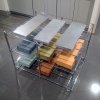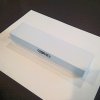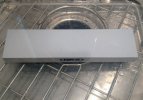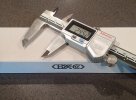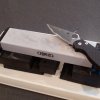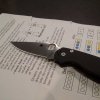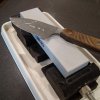- Joined
- Mar 8, 2008
- Messages
- 25,947

Finally have these in a full-sized bench stone. Single grit configuration only, as the shrink rate differential between the two sides put too much tension on this large of a stone and they'd pull themselves apart during firing. I've been using my personal one as a go-to for EDC and culinary knives and it's been performing beautifully, as expected. Like the rest of the Arctic Fox stones, it's an ANSI 400 grit (22µ) ice-blue aluminum oxide in a medium-hard ceramic bond that cuts fast, resists loading, but is hard enough to wear slowly and provide a crisp apex. Readily absorbs and holds water, or can be used with oil if desired.

